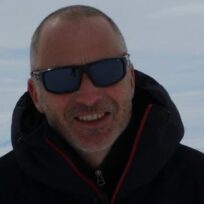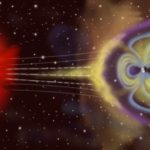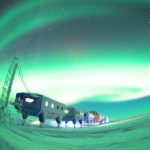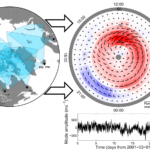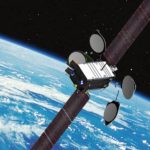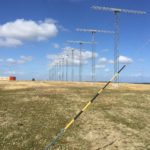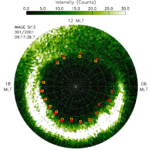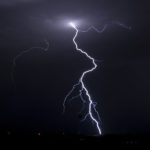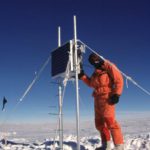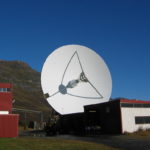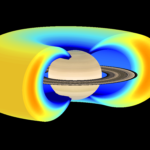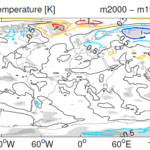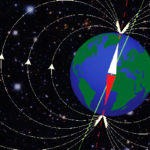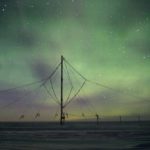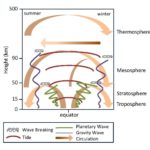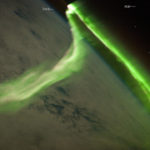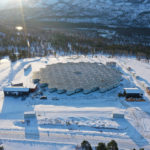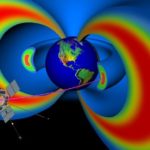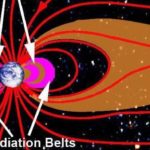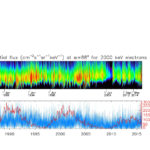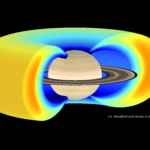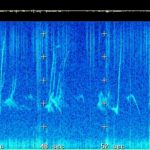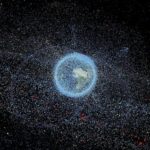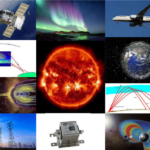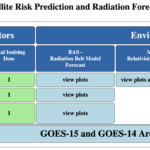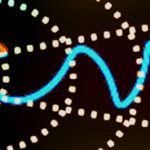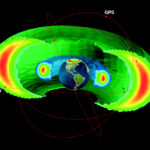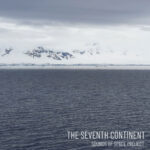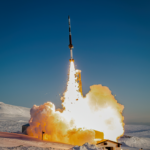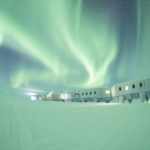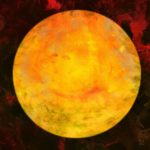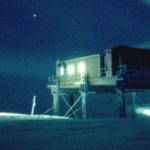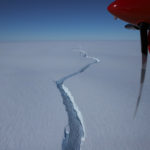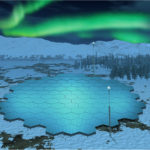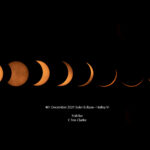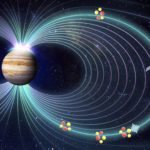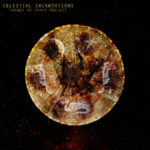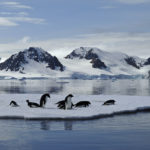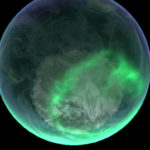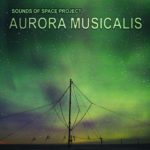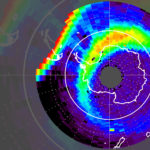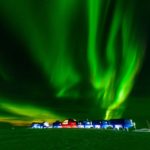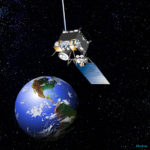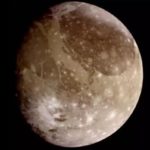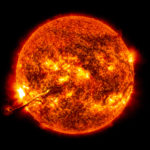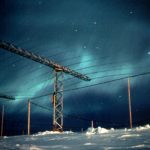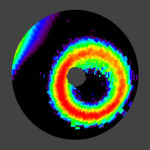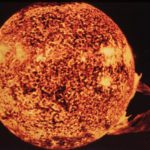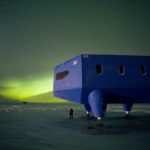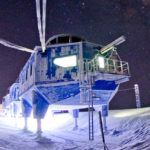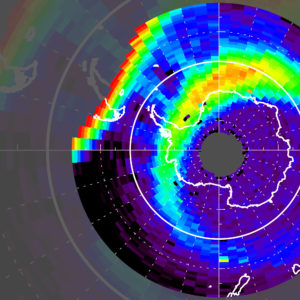Space Weather and Atmosphere team
Our ambition
Large explosions on the Sun known as coronal mass ejections can spew out billions of tons of charged particles and magnetic field into space. When these disturbances reach the Earth they can trigger geomagnetic storms and increase particle radiation levels, causing disruption to power grids, satellites, aviation, and a host of other dependent businesses. These effects are known as Space Weather. Solar variations are also linked to changes in the atmosphere and surface temperature in the Polar Regions but how this occurs and how it affects weather and climate are open questions.

The goal of the Space Weather and Atmosphere team is to understand how solar variations affect the Earth’s space radiation environment, upper atmosphere and climate in the Polar Regions.
Our research provides the information needed by the Space Industry, UK Insurance and Government to mitigate the effects of severe Space Weather, and to assess the solar contribution to climate change in the Polar Regions.
Team priorities
Science
- Space radiation environment. To measure, simulate and predict changes in space radiation environment as they affect satellites, and to develop realistic scenarios of severe space weather events. These results are being used to assess which satellite orbits are most at risk and to develop better mitigation guidelines. They are also being used to provide real-time situation awareness for satellite operators.
- Atmospheric heating. To measure the heating and upward expansion of the polar atmosphere due to electrical currents set up during geomagnetic storms. This process, known as Joule heating, is the largest uncertainty in orbit prediction for satellites and space debris. The results will help provide better collision avoidance measures between satellites and space debris in low Earth orbit.
- Climate impacts on satellites orbits. To model and measure changes in the upper atmosphere related to increased levels of CO2 and to the impact the long term impact this has on the satellite and space debris environment. These results will inform best practice for satellite operators for long-term planning.
- Space-atmosphere coupling. To measure changes in atmospheric chemistry caused by particle precipitation and assess how they can affect the heating and cooling of the upper atmosphere. These results are being used in models to determine how they couple through the atmosphere to affect surface temperature and to determine their effect on polar climate.
- Solar effects on climate. To measure changes in the geoelectric field and understand how it can affect the atmosphere. Changes in the geoelectric field between the ground and the ionosphere have been linked to changes in atmospheric temperature, from the surface upwards.
Technology, innovation and training
- Using High Frequency over-the-horizon radars to understand coupling between the Sun, solar wind and the upper atmosphere, and the transport of charged particles in the radiation belts
- Using Medium Frequency radars to measure high altitude winds and atmospheric circulation in the polar vortex
- Developing state-of-the-art sub-millimetre radiometer technology to measure upper atmosphere winds and chemistry with Cambridge University
- Using an array of remote, low power magnetometers to measure changes in the geomagnetic field and electrical currents generated by Space Weather
- Using the BAS radiation belt model to simulate and predict the Earth’s radiation environment for satellites (a model equivalent to a general circulation model in atmospheric science), built upon important models of particle and wave process.
- Exploiting data collected by constellations of satellites on charged particles, electromagnetic fields and atmospheric composition
- Training young scientists via PhD studentships via NERC Doctoral Training Partnerships (DTP) such as the Cambridge Earth System Science and Southampton INSPIRE and via short term student vacation projects
Influencing and leading international programmes
- Continue setting scientific priorities as one of the PI Groups in the international SuperDARN radar network, and the AARDDVARK radio receiver consortium
- Continue leading the European Union SPACESTORM project
- Continue to play a leading role in the International Association of Geophysics and Aeronomy (IAGA), and the VLF/ELF Remote Sensing of the Ionosphere and Magnetosphere (VERSIM) scientific planning
Stakeholder engagement
- Continue providing expert advice to the Cabinet Office and UK Government departments through our membership of the Space Environment Impacts Expert Group (SEIEG) , meeting with the Government Office of Science and officials from Departments such as Business and Trade, Science, Innovation & Technology, and Transport.
- Continue our collaborations with the space industry including UK insurance, European satellite operators and satellite designers, through our leadership of the European SPACESTORM project
- Organising an annual end-user lunch at the European Space Weather Week jointly with the European Space Agency
- Continue representing the UK on the Council of the European Incoherent Scatter (EISCAT) radar and supporting UK users of the facility
Public engagement
- Disseminating information by publishing our results in high-impact peer reviewed Journals, giving presentations at international conferences and issuing press releases when appropriate
- Organising and running scientific sessions at International conferences
Space Weather Observatory
Assessing Space Weather impactsTHeMES
The thermosphere is the uppermost layer of our atmosphere at the edge of space (85 to 1000 km altitude). Within this region orbit thousands of satellites worth billions of pounds …Rad-Sat
Rad-Sat is a NERC Highlight Topic that brings together a consortium of scientists from 5 different UK research groups, stakeholders from the space industry and a network of international collaborators. …SuperDARN
The Super Dual Auroral Radar Network (SuperDARN) has been operating as an international co-operative organisation for over 25 years, and has proved to be one of the most successful tools …IMAGE Auroral Boundary Data
The objective of this project was to investigate whether magnetic reconnection in the space environment has a characteristic scale in space and time by characterising statistically the spatial and temporal …The Global Electric Circuit
Weather and climate prediction are inevitably limited by incomplete knowledge of the Earth system and its external influences. One under-explored and consequently controversial area of research is the meteorological influence …LPM Network
Access data from the Low Power Magnetometer (LPM) networkEISCAT Science Support
The UK EISCAT support group (UKESG) is a collaboration between the British Antarctic Survey and the Rutherford Appleton Laboratory, funded via the National Centre for Atmospheric Science (NCAS) EISCAT, the …Electron Acceleration in the Radiation Belts of Earth, Jupiter & Saturn
Radiation belts of very high energy electrons and protons can form around some planets – at the Earth these large donut shaped regions in space are often called the Van …The effects of long-term changes in the Earth’s magnetic field
The Earth’s magnetic field plays a key role in the interaction between the solar wind and near-Earth space, which affects the upper atmosphere (~100-500 km altitude) in particular in the …A High-Order Model of the Earth’s External and Induced Magnetic Field
For centuries people have used magnetic compasses to guide them on their way and explore new territories. This has led scientists to embark on their own journeys of discovery about …QEPPA
QEPPA is a joint project between the British Antarctic Survey and the Space physics group at Lancaster University. The objective of QEPPA is to work out the amount of charged …SPACESTORM
SPACESTORM is a collaborative project to model space weather events and find ways to mitigate their effects on satellites. Over the last ten years the number of satellites on orbit …Whole Atmosphere Climate Change
The near-Earth space environment is host to an increasing amount of advanced, satellite-based technology, used for both commercial and scientific purposes. To safeguard this technology and ensure that we can …SWIGS
Certain ground based technologies, such as electrical power grids, pipelines and railways are susceptible to the effects of Space Weather. Changes in the way the magnetic fields of the …DRIIVE
DRIIVE will use the new EISCAT_3D radar to understand multi-scale coupling in the Ionopshere and how it is influenced both by space weather and the lower atmosphere. The impact of …Sat Risk
Sat-Risk – Satellite Radiation Risk Forecasts – is a collaborative project between several academic institutions and stakeholders. The project is part of the Space Weather Instrumentation, Measurement, Modelling and Risk …SORBS
Violent eruptions on the Sun can trigger large magnetic storms at the Earth lasting for days. These storms can increase the number of high-energy charged particles trapped in the radiation …Radbelt-DA
The goal of the Radbelt-DA project is to apply data assimilation techniques used in weather forecasting to the BAS radiation belt model (BAS-RBM). This will enable much better reconstructions of …PlanetBelt3
STFC funded research grant‘Sounds of Space’
Using a Very Low Frequency receiver at Halley Research Station we can pick up radio waves made by our planet. We use these waves to investigate the science of space …Joule Heating
Society is highly dependent on the fleet of satellites that surround our planet. We rely on them for entertainment, communication, navigation, weather forecasting, and more. Many day-to-day activities, such as …SWIMMR-T
Space debris is emerging as a key problem for humanity with the potential to cause major socio-economic impacts. It is currently estimated that there are over 900,000 pieces of debris …SWESNET
The British Antarctic Survey (BAS) provides a forecast of high energy electrons in the Earth’s radiation belts which can cause damage to satellites on orbit. These forecasts are used by …PADIE
Recent research has demonstrated that electro-magnetic waves present in space can have a dramatic effect on the charged particles in the radiation belts. Under certain conditions the particles can resonate …HOTRAY Ray Tracing Model
HOTRAY is a ray tracing computer code designed to trace the path of electromagnetic waves in a hot magnetised plasma. HOTRAY has been used to understand the generation and propagation …BAS-RBM
The radiation belts are the region of space around the Earth where high energy charged particles are trapped by the Earth’s magnetic field. The energy of the particles and their …Dr Nigel Meredith awarded 2025 Chapman Medal for plasma wave research
10 January, 2025
The Royal Astronomical Society (RAS) has awarded the 2025 Chapman Medal to Dr Nigel Meredith for his world leading and transformative research on plasma waves in magnetospheric physics. The announcement was made …
Sounds of Antarctica come to life in new album
15 November, 2024
Today marks the release of The Seventh Continent, a new album from the international Sounds of Space Project that offers a unique aural journey to Antarctica. The album features contributions …
Rocket launch discovers long-sought global electric field on Earth
28 August, 2024
An international team of scientists, including a researcher from British Antarctic Survey (BAS) has, for the first time, successfully measured a planet-wide electric field thought to be as fundamental to …
Scientists set out benchmarks for extreme space weather
15 June, 2023
Extreme space weather threatens vital satellites orbiting the Earth, including the Global Navigation Satellite Systems (GNSS) which pass through the heart of the outer radiation belt. New research led by …
Geomagnetic storm sounds inspire new album
24 February, 2023
A new album inspired by the sounds of radio waves produced by a geomagnetic storm has been released. St Swithin’s Day Storm is a collaboration with Steven Anderson, known as …
‘Sounds’ of the sun inspire an extraordinary new album
2 December, 2022
A new album transporting listeners on a journey to the Sun and inspired by ‘sounds’ captured in space and on the ground shows the magic created when science and the …
Climate change to increase lifetime of space pollution
18 October, 2022
Satellites face greater chances of collision with space debris as a result of reduced density in the upper atmosphere. Increasing levels of CO2 in the Earth’s atmosphere will result in …
Antarctica as testing site ahead of mission to icy moons
9 February, 2022
Scientists have deployed a network of seismometers onto Antarctica’s Brunt Ice Shelf in an experiment that will test the instrument’s ability to operate on icy moons in the Solar System. …
BAS scientist awarded Gold Medal by Royal Astronomical Society
14 January, 2022
The Royal Astronomical Society has awarded the 2022 Gold Medal for Geophysics to Professor Richard B Horne for his outstanding contributions to our understanding of the physics underlying space weather. …
Grant to understand future impacts on atmospheric prediction
13 January, 2022
A new project to improve scientists understanding of the impact of space weather and climate change on the atmosphere starts this month (January 2022). A team from British Antarctic Survey, …
Antarctica experiences rare total solar eclipse
3 December, 2021
A rare total solar eclipse in Antarctica this weekend (Saturday 4 December) is giving researchers a unique opportunity to learn more about how solar eclipses affect space weather. The next …
Mystery of what causes Jupiter’s X-ray auroras is solved
12 July, 2021
The 40-year-old mystery of what causes Jupiter’s X-ray auroras has been solved. For the first time, scientists have seen the entire mechanism at work – and it could be a …
‘Sounds of space’ feature in album Celestial Incantations
21 June, 2021
Celestial Incantations – New album release from Sounds of Space Project New album Celestial Incantations is released today by the international Sounds of Space Project, comprising of Dr Nigel Meredith …
BAS staff recognised with Royal Society Fellowships
6 May, 2021
We are delighted to announce that today (6 May 2021) Professor Dame Jane Francis, Director of British Antarctic Survey, and Professor Richard Horne, Head of Space Weather and Atmosphere team, …
Medal win for space weather scientist
13 November, 2020
The award recognises Professor Horne’s unique ability to combine basic and applied research to develop useful space weather products.
Space weather monitoring receives funding boost
27 June, 2020
Space weather research at British Antarctic Survey (BAS) receives a funding boost of around £2M today (Saturday 27 June) from the SWIMMR (Space Weather Instrumentation, Measurement, Modelling and Risk) programme. …
New album Aurora Musicalis brings the ‘sounds of space’ to the public
6 May, 2020
A new album with the unique ‘sounds of space’ recorded from Antarctica is released free today (6 May 2020). Aurora Musicalis contains the natural radio ‘sounds’ of our planet, recorded …
Appleton Prize awarded to Professor Richard Horne
4 March, 2020
British Antarctic Survey is pleased to announce the Appleton Prize 2020 has been awarded to Professor Richard Horne, Head of the Space Weather and Atmosphere science team at British Antarctic …
Space weather ‘super storms’ occurred every 25 years
29 January, 2020
A ‘great’ space weather super-storm large enough to cause significant disruption to our electronic and networked systems occurred on average once in every 25 years. The results are published today …
Space weather study wins accolade
4 November, 2019
A team of international researchers, including Professor Richard Horne from British Antarctic Survey, has been awarded best research study from the journal Risk Analysis for 2019. The study, led by …
Funding boost for space weather research
24 September, 2019
Space weather research gets a boost this week with a £20m fund announced by the UK Prime Minister. Space weather, such as flares or winds from the Sun’s surface or …
Space weather causes radiation damage to satellites
1 July, 2019
The use of electric propulsion for raising satellites into geostationary orbit can result in significant solar cell degradation according to a new study. The extended journey results in greater exposure …
Scientist awarded prestigious award
15 January, 2019
British Antarctic Survey space weather scientist, Dr Mark Clilverd, has been awarded a prestigious award from the Royal Astronomical Society (RAS) in their 2019 Awards. The award recognises Mark as …
‘Sounds of Space’ from Antarctica feature in space simulation game
11 December, 2018
Amazing, natural, ‘sounds of space’, have been incorporated into the new exploration gameplay in Elite Dangerous
A new way to create Saturn’s radiation belts
29 November, 2018
A team of international scientists from BAS, University of Iowa and GFZ German Research Centre for Geosciences has discovered a new method to explain how radiation belts are formed around …
Satellites more at risk from fast solar wind than a major space storm
3 September, 2018
Satellites are more likely to be at risk from high-speed solar wind than a major geomagnetic storm according to a new UK-US study published this week in the Journal Space …
Million fold increase in the power of waves near Jupiter’s moon Ganymede
8 August, 2018
Understanding of how Jupiter’s magnetic field interacts with its moons and with intense particle radiation.
Most advanced space weather radar to be built in Arctic
23 August, 2017
The most advanced space weather radar in the world is to be built in the Arctic by an international partnership including the UK, thanks to new investment, including in the …
New study reveals potential cost of solar storms
18 January, 2017
The daily U.S. economic cost from solar storm-induced electricity blackouts could total more than $40 billion, with more than half the loss occurring outside the blackout zone, says new study. …
Royal Astronomical Society honours BAS scientist
13 January, 2017
Dr Mervyn Freeman, Senior Space Weather Researcher at British Antarctic Survey, has been awarded the prestigious Chapman Medal in Geophysics by the Royal Astronomical Society (RAS). The medal recognises his …
FEATURED PAPER: Energetic Electron Hazard
13 June, 2016
Energetic electrons are an important space weather hazard. In this paper we apply extreme value analysis to 16 years of operational satellite data from the NOAA Polar Operational Environmental Satellites …
PRESS RELEASE: New season – ambitious science
23 November, 2015
New season tackles ambitious science and logistical challenges The British Antarctic Survey (BAS) 2015/16 field season is underway with dozens of scientists and support staff – together with planes and tonnes …
NEWS STORY: Space weather features at free event
4 June, 2015
FREE event: ‘Discover Antarctica’ at British Geological Survey Open Day, Saturday 27 June, 10am-4pm Staff from British Antarctic Survey (BAS) will showcase its work at this year’s British Geological Survey …
NEWS STORY: NERC placement offered
6 May, 2015
NERC Research Experience Placement 2015 A Research Experience Placement supported by EnvEast DTP and funded by the Natural Environment Research Council (NERC) is available at British Antarctic Survey (BAS) this …
NEWS STORY: Lessons from electrons
14 October, 2014
Study of electrons in space could help weather forecasting Researchers have discovered a formerly undetected impact of space weather on the polar atmosphere, which may explain some previously unexplained variations …
NEWS STORY: Changes in upper atmosphere
23 May, 2014
Earth’s magnetic field is important for climate change at high altitudes New research, published this week, has provided scientists with greater insight into the climatic changes happening in the upper …
NEWS STORY: Improving space weather forecasting
9 June, 2013
Space weather forecasting system used by satellite operators Weather forecasting is a tricky enough job on Earth, but doing it for the outer atmosphere and beyond is even more problematic. …
NEWS STORY: BAS involved in NASA mission
30 August, 2012
British Antarctic Survey scientists involved in NASA ‘space weather’ mission WASHINGTON — NASA’s Radiation Belt Storm Probes (RBSP), the first twin-spacecraft mission designed to explore the Earth’s radiation belts, launched …
PRESS RELEASE: Space weather forecasting
29 March, 2011
Major EU-funded space weather initiative launched and managed in UK A major EU-funded initiative to improve ‘space weather’ forecasting will hold its inaugural meeting in the UK on Tuesday 29 …
PRESS RELEASE: New research sheds light on Aurora
20 October, 2010
New space research settles years of scientific debate New space research published this week (Thursday 21 October) in the journal Nature, has settled decades of scientific debate. Researchers from the …
Read, read, read and new ideas will come to you
30 August, 2022 by Richard Horne
We speak to a British Antarctic Survey Scientist on becoming a Fellow of the Royal Society… Professor Richard Horne FRS is the former Head of Space Weather at the British …
ANTARCTIC BLOG: BBC arrives at Halley #3
5 February, 2016 by Athena Dinar
“I feel like I’m home” says BBC weather forecaster Peter Gibbs as he sets foot on the Brunt Ice Shelf. It’s an emotional moment for him; the last time he …
Solar Wind and Geomagnetic Conditions That Lead to the Largest Relativistic Electron Fluxes in GPS Orbit
21 November, 2025 by Kaine Bunting, Mark Clilverd, Nigel Meredith, Thomas Daggitt
Relativistic electrons are an important space weather hazard, being a major source of radiation damage to satellites and posing a risk to humans in space. We use approximately 20 years…Multi‐Platform Observations of the Radial Penetration of Substorm Injected Electrons and Subsequent Slot‐Filling Event
1 November, 2025 by Richard Horne
On 15 February 2018 a co-rotating interaction region (CIR) from an equatorial coronal hole reached the Earth. The CIR initiated a moderate and slowly intensifying geomagnetic storm, which began with…Multi‐MeV Electron Occurrence and Lifetimes in the Outer Radiation Belt and Slot Region During the Maximum of Solar Cycle 22
17 October, 2025 by Nigel Meredith, Sarah Glauert
The Combined Release and Radiation Effects Satellite (CRRES) observed the response of the Van Allen radiation belts to peak solar activity within solar cycle 22. This study analyses relativistic and…Century-scale effect of climate change on meteorite falls
15 October, 2025 by Ingrid Cnossen
Climate change is inducing a global atmospheric contraction above the tropopause (~10 km), leading to systematic decrease in neutral air density. The impact of climate change on small meteoroids has…Read more on Century-scale effect of climate change on meteorite falls
Occurrence Rates and Variability of Whistler‐Mode Waves in the Plasma Trough
4 October, 2025 by Jenny Wong, Nigel Meredith
Numerical models of energetic electron behavior in the outer radiation belt require descriptions of the wave‐particle interactions across the inner magnetosphere. Quasilinear diffusion coefficients describe gyro‐resonant wave‐particle interactions over large…Read more on Occurrence Rates and Variability of Whistler‐Mode Waves in the Plasma Trough
Why Do Sudden Commencements Sometimes Generate Disproportionate Geomagnetically Induced Currents?
1 October, 2025 by Mark Clilverd
Geomagnetically Induced Currents (GICs) in grounded, conducting infrastructure (e.g., power networks) represent an important space weather hazard. GICs are driven by the changing magnetic field at the Earth's surface. Due…Automated Identification of Auroral Luminosity Boundaries Using pyIntensityFeatures
25 September, 2025 by Gareth Chisham
Imagers that observe optical or ultraviolet emissions from the atmosphere are commonly used to identify and study ionospheric phenomena. These phenomena include the auroral oval, equatorial plasma bubbles, and traveling…Read more on Automated Identification of Auroral Luminosity Boundaries Using pyIntensityFeatures
Characterization of the ionosphere response to the X1.3 solar event occurred on 30 March 2022
13 September, 2025 by Gareth Chisham
This work aims to characterize the ionospheric disturbances in the South America – Antarctic Peninsula sector due the impact of a X1.3 solar event. This flare occurred on 30 March…Gravity Wave Variability in the Arctic Mesosphere in Relation with the Stratospheric Polar Vortex
28 August, 2025 by Subir Mandal, Tracy Moffat-Griffin
In this study, we have investigated short-period ( 1 hr) atmospheric gravity waves (AGWs) in the Arctic mesosphere-lower thermosphere (MLT) region during January of 2014, 2015, and 2016. We used…Evolution of dayside chorus into nightside plasmaspheric hiss
25 August, 2025 by Nigel Meredith
Plasmaspheric hiss is an incoherent, broadband, whistler-mode emission that is found primarily in the Earth’s dense plasmasphere and is believed to be largely responsible for the formation of the slot…Read more on Evolution of dayside chorus into nightside plasmaspheric hiss
The Impact of Adaptive High-Latitude Coordinates
16 August, 2025 by Gareth Chisham
The high-latitude ionosphere can be divided into three regions dominated by different types of coupling and characterized by distinctive behaviors. These are the polar cap, the auroral region, and the…Read more on The Impact of Adaptive High-Latitude Coordinates
Modeling the Internal Redistribution of Earth’s Proton Radiation Belt by Interplanetary Shocks
19 June, 2025 by Richard Horne, Sarah Glauert
A large proton belt enhancement occurred on 24 March 1991 following an interplanetary shockthat impacted the dayside magnetopause at ∼03:40 UT. Its formation was measured by the proton telescopeaboard CRRES…Satellite Internal Charging for a Reasonable Worst‐Case
14 June, 2025 by Nigel Meredith, Pak Yin Lam, Peter Kirsch, Richard Horne, Sarah Glauert
Increases in the flux of high energy electrons in the Earth's radiation belts cause satellite charging which can lead to an electrostatic discharge, anomalies and disruption to service. For geostationary…Read more on Satellite Internal Charging for a Reasonable Worst‐Case
Implementing Geomagnetically Induced Currents Mitigation During the May 2024 “Gannon” G5 Storm: Research Informed Response by the New Zealand Power Network
1 June, 2025 by Aaron Hendry, Mark Clilverd
In early May 2024 ∼6 Coronal Mass Ejections were launched toward the Earth in shortsuccession. This triggered the G5 “Gannon” geomagnetic storm lasting from ∼17 UT on 10 May 2024…Implementing an Operational Cloud‐Based Now‐ and Forecasting System for Space Weather Ground Effects in the UK
15 May, 2025 by Mervyn Freeman
The enhanced variation of the magnetic field during severe to extreme geomagnetic storms induces a large geoelectric field in the subsurface. Grounded infrastructure can be susceptible to geomagnetically induced currents…Electron Acceleration and Zebra Stripe Formation in Saturn’s Radiation Belts
3 May, 2025 by Emma Woodfield
This study uses the Versatile Electron Radiation Belt code to model Saturn's radiation belt environment, investigating electron acceleration, loss, and transport mechanisms. The simulations consider various physical processes, including convection…Read more on Electron Acceleration and Zebra Stripe Formation in Saturn’s Radiation Belts
Separating DP1 and DP2 Current Pattern Contributions to Substorm‐Like Intensifications in SML
26 April, 2025 by Mervyn Freeman
Substorms have been identified from negative bays in the AL/SML index, which traces the minimum northward ground magnetic deflection at auroral latitudes, produced by enhancements of the westward electrojet. For…Geomagnetically Induced Currents, Transformer Harmonics, and Reactive Power Impacts of the Gannon Storm in May 2024
17 April, 2025 by Mark Clilverd
Geomagnetically induced current (GIC) measurements made at two 3 phase, 3 limb transformers, operating in the Halfway Bush substation in Dunedin, New Zealand have been analyzed during the May 2024…A Characteristic Signature of Magnetospheric Wave-Particle Interactions Found in the Turbulent E-region
11 April, 2025 by Richard Horne
Plasma waves in the magnetosphere scatter electrons, causing them to precipitate into Earth’s atmosphere, imparting their temporal characteristics to diffuse auroras. In a case study of conjugate radar and satellite…Ionospheric D Region: Characteristics Near Dawn and Dusk
9 April, 2025 by Mark Clilverd
The characteristics of very low frequency (VLF) radio wave propagation in the Earth-ionosphere waveguide are determined particularly through dawn and dusk using phase and amplitude measurements of man-made signals propagating…Read more on Ionospheric D Region: Characteristics Near Dawn and Dusk
Science Leader
Deputy Science Leader
Share this
Featured
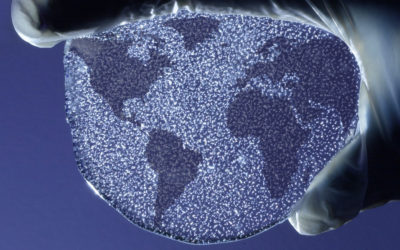
Science strategy
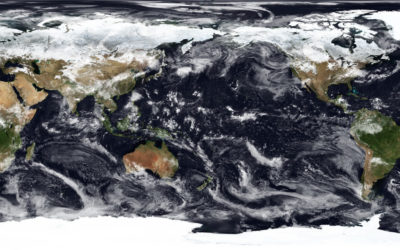
Private: Our Grand Challenges for polar science
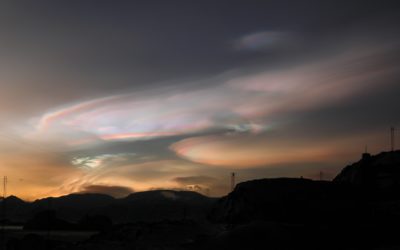
Atmospheric physics & chemistry
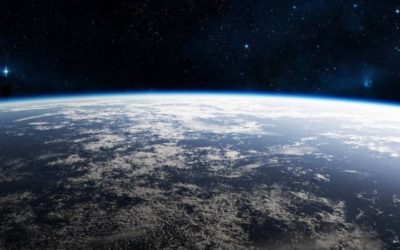
Space weather – resilience to natural hazards
